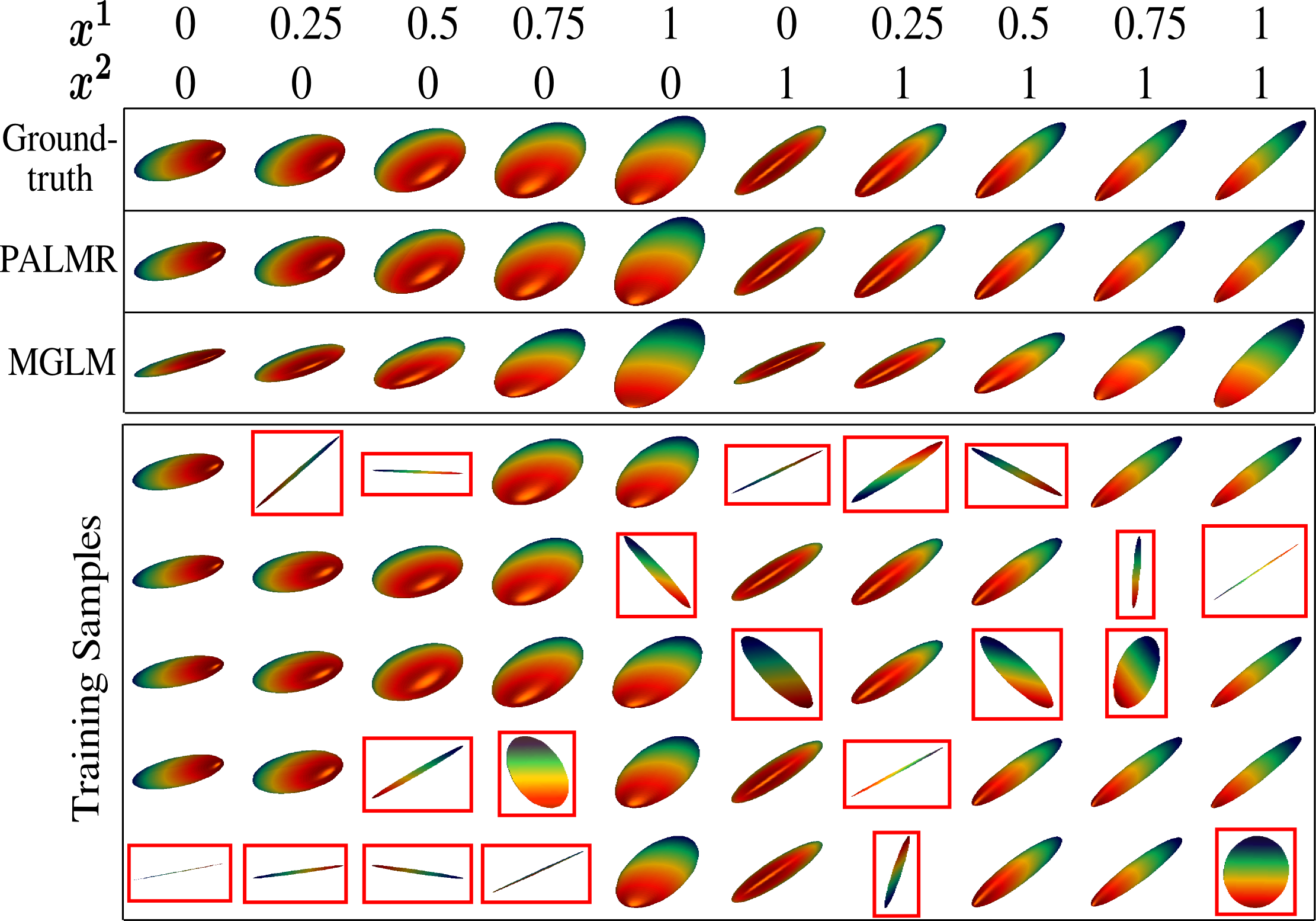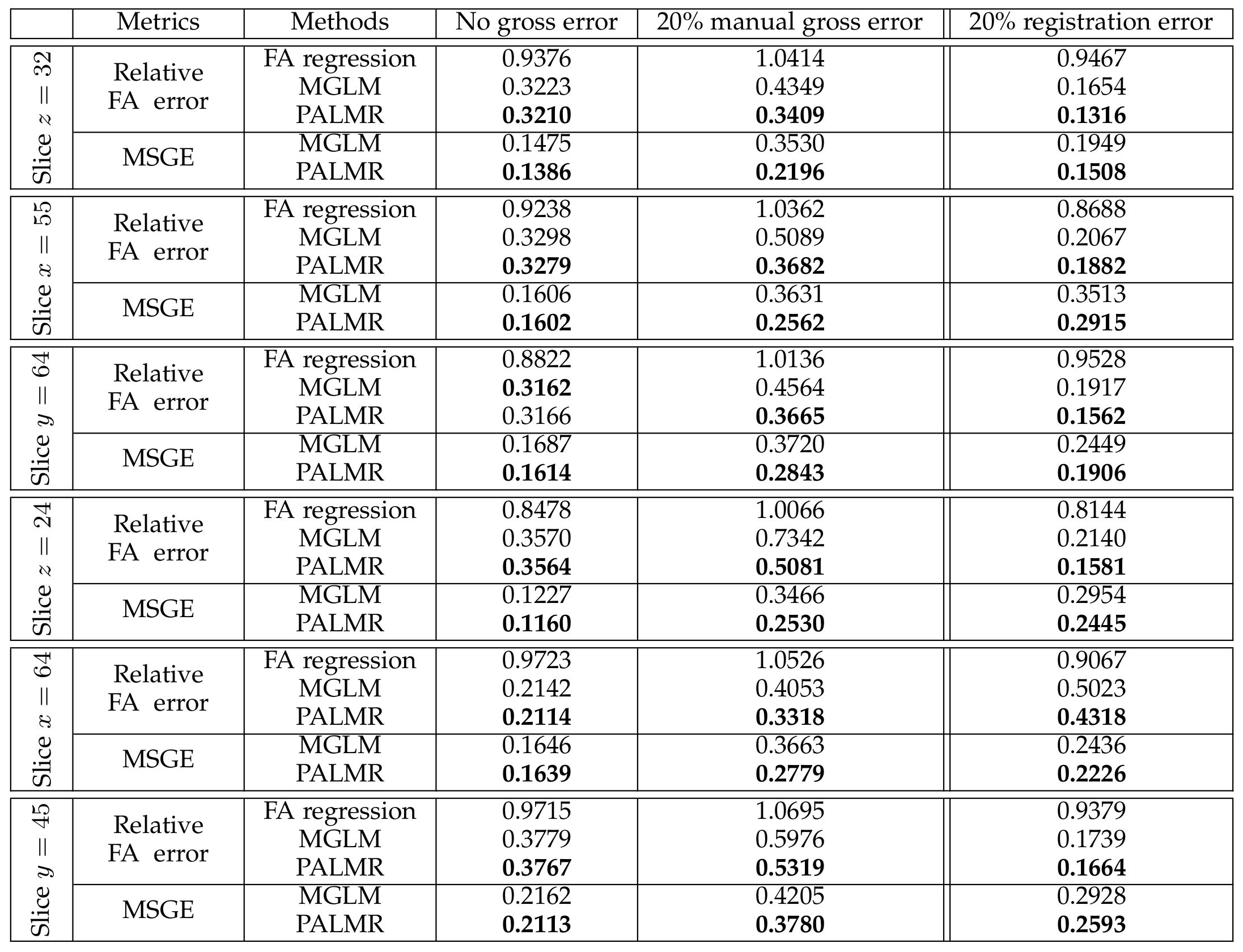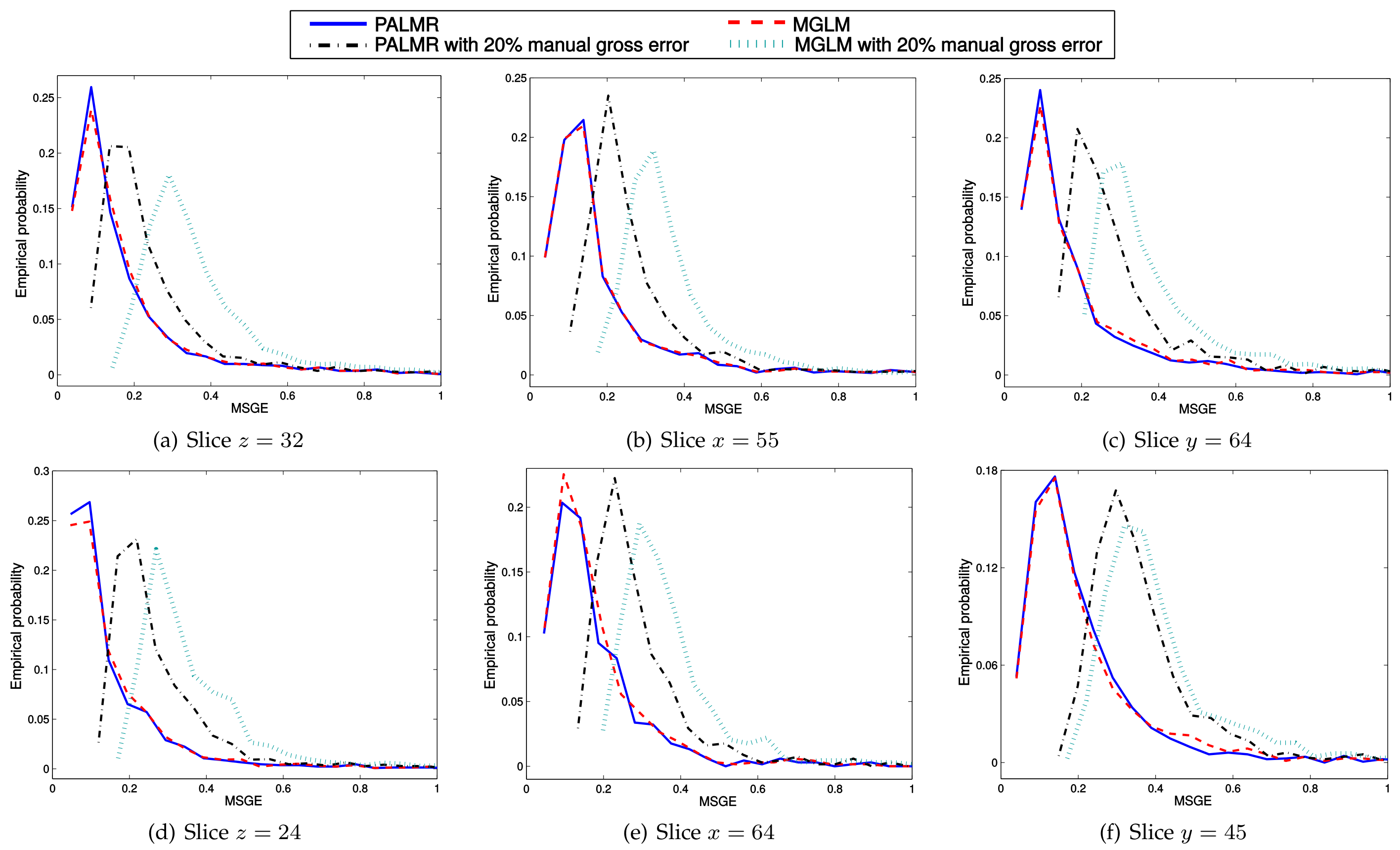-
Visual results on synthetic data
We first conduct experiments on a data set with 2-dimensional independent variables, 50 training data of
which 40% are contaminated by gross errors with magnitude being 5, and compared with MGLM which has not considered gross error. Training samples are displayed in
Figure 1, where we also show the predictions of PALMR and MGLM on the training data.
Visual results of PALMR and MGLM on 20 testing data and training data correction by PALMR are presented in
Figure 2 and Figure 3, respectively. Collectively,
the results suggest that PALMR indeed is capable of correctly identifying the gross errors during training.

Figure 1: The two row vectors on the top give the values of $X$ generating the data, red boxes identify the samples with gross error. The rows indexed by PALMR and MGLM display the predictions of corresponding method on the training data.

Figure 2: Predictions of PALMR and MGLM on 20 testing data.

Figure 3: Training data correction by PALMR.
-
Quantitative results on real DTI data
We apply PALMR to examine the effect of age and gender on human brain white matter. We experiment with the C-MIND database.

Table 1: Median values of prediction errors on all six slices of testing data. We use two metrics, relative FA error and MSGE, to measure the prediction error. The best results in each setting are highlighted in bold.

Figure 4: Distribution of mean squared geodesic errors on testing data for each of the six slices.